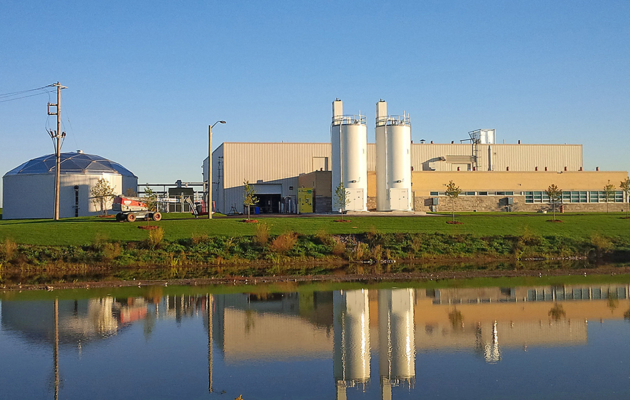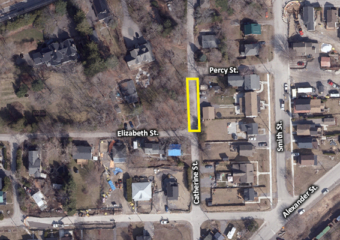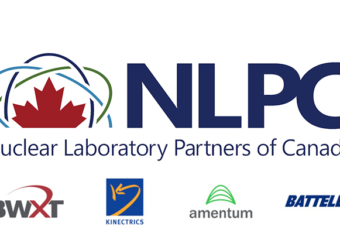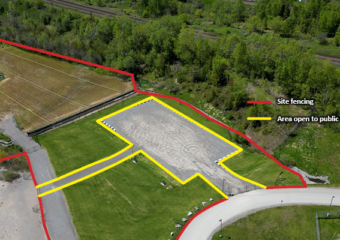With almost 1.2 million tonnes of historic waste excavated and stored safely and for the long-term at the Port Granby Long-Term Waste Management Facility, the mound is currently being capped and closed. Remediation and restoration of the Legacy Port Granby waste site and the capping of the new waste storage mound is expected to be complete in summer 2020.
As part of the cleanup of the legacy site on the shores of Lake Ontario in Port Granby, water collected from rainfall on the site and as leachate (runoff) from within the mound is being treated by a dedicated Waste Water Treatment Facility.
Commissioned in 2016 prior to the start of cleanup activities, the plant is equipped with best available technologies to treat the waste water before it is released into the Great Lakes Basin eco-system. Ongoing testing has shown that the advanced treatment technology at the plant ensures the quality of water discharged into Lake Ontario throughout the cleanup meets stringent Canadian Nuclear Safety Commission requirements.
“We are pleased that we were able to have an amendment of the Port Granby Project licence following a Canadian Nuclear Safety Commission Review earlier this year. This licence amendment is confirmation that the plant has been effective in removing contaminants from waste water and meeting stringent discharge criteria,” says Ajit Ghuman, Operations Lead at the Port Granby Waste Water Treatment Plant.
While currently treating water during the cleanup of the site, the dedicated waste water treatment plant will also continue to treat contaminated water from within the mound after it is closed. It is also expected to treat marginally impacted water from the legacy site for decades after.
The process includes the removal of contaminants from the waste water before clean water is released into Lake Ontario. As a result, there are primarily two types of solids containing radionuclides that are left behind as waste products (residuals), both of which are currently being disposed in the mound.
The first type is a calcium carbonate based filter press solid which is a by-product of softening brine to allow for further concentration. This process produces solid waste that generally does not require any further handling for disposal. The second type is a slurry liquid which currently requires some form of stabilization prior to disposal in the mound. This is done by the addition of stabilizing agents such as polymer, cement and or bentonite. This process makes it easier to stack and organize the waste within the mound. When the plant was processing at its peak during 2018 and 2019, there was an average of up to 4 filter press totes and 10 slurry totes produced from the plant on a daily basis.
With the mound now in the process of being closed, some waste material from the plant will need to be trucked to another licensed facility for long-term safe storage. When the mound is closed, it is expected that the amount of material to be transported off site will significantly decrease.
The plant is currently operating for 24 hours seven days a week.




